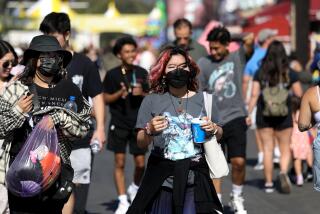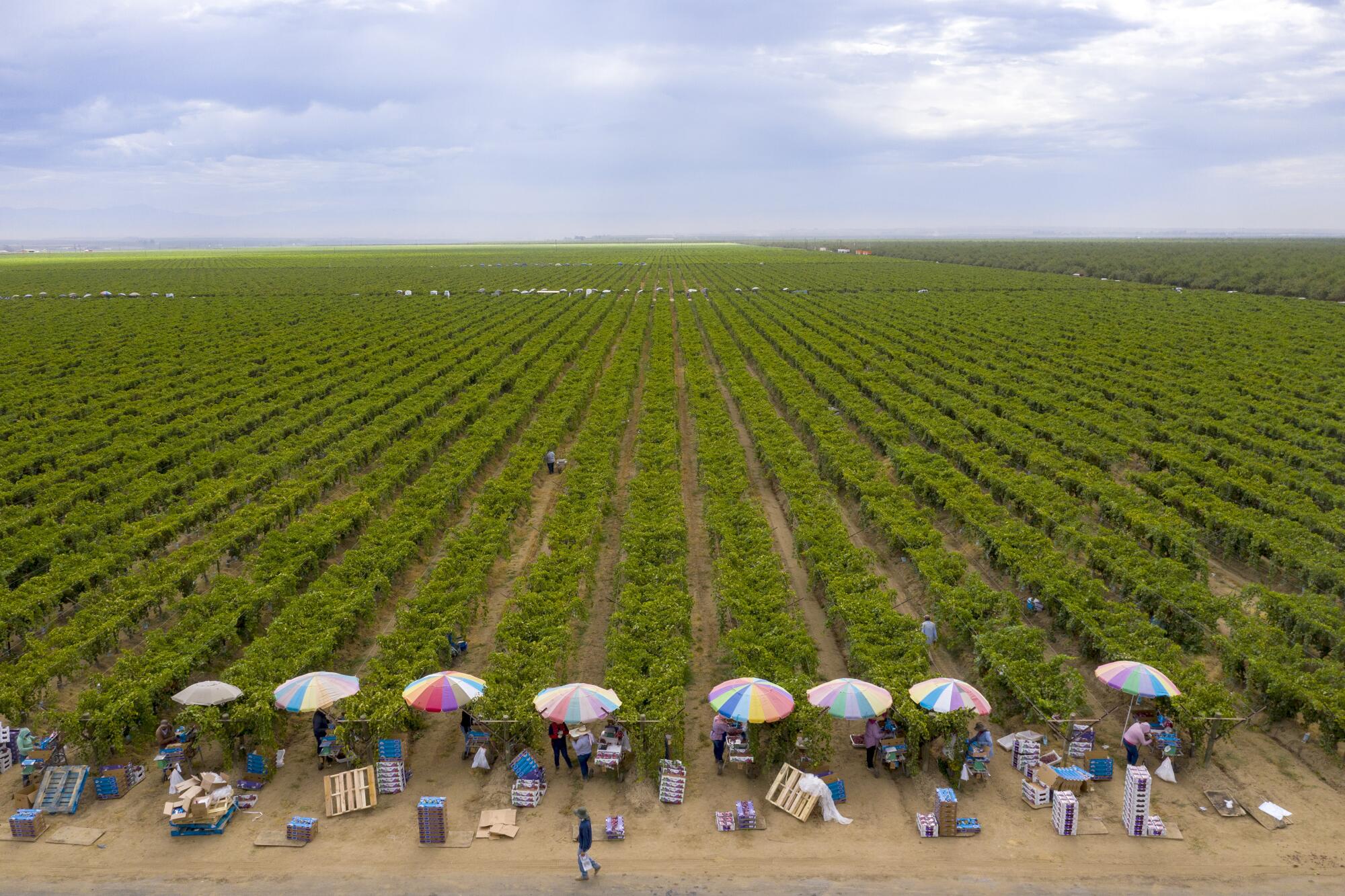
- Share via
Kern County has become one of the worst coronavirus hot spots in the nation, with infections spreading rapidly through food processing plants, agricultural communities and other places in Bakersfield and small rural towns.
But the response to the crisis has been hampered by growing battles between state and local officials, with Kern County leaders complaining that they have been stymied by mixed messages and bureaucratic red tape.
The state has done a poor job clarifying who is supposed to enforce state-mandated restrictions on businesses and community gatherings, and has sent confusing — and sometimes contradictory — guidance from multiple agencies responding to the crisis, said Kern County Public Health Services Director Matt Constantine.
“We spend a lot of our time interpreting and seeking clarification,” Constantine said.
Brian Ferguson, a spokesman for the California Governor’s Office of Emergency Services, said the state communicates regularly with Kern County about taming the outbreak and that “the best, fastest and most direct form of enforcement [of public health rules] is always at the local level.”
Kern County is one of the reddest places in liberal California. Its history is woven with the plight of Dust Bowl refugees who came to work in the fields and brought their conservative, deeply religious views with them, and it is the famed birthplace of the Bakersfield sound and Merle Haggard.
Doubts about the coronavirus and the state’s shutdown orders are prevalent. Two Bakersfield doctors have garnered national attention as part of a group called America’s Frontline Doctors, which made a widely shared video touting hydroxychloroquine as a cure for COVID-19 and saying masks were ineffective. It was retweeted by President Trump and later removed by Facebook, YouTube and Twitter for containing misinformation.
“We know there’s a lot going on with the state. We hope there’s a time coming soon where we can coordinate and help the community stay safe, but that hasn’t happened.”
— Matt Constantine, Kern County Public Health Services Director
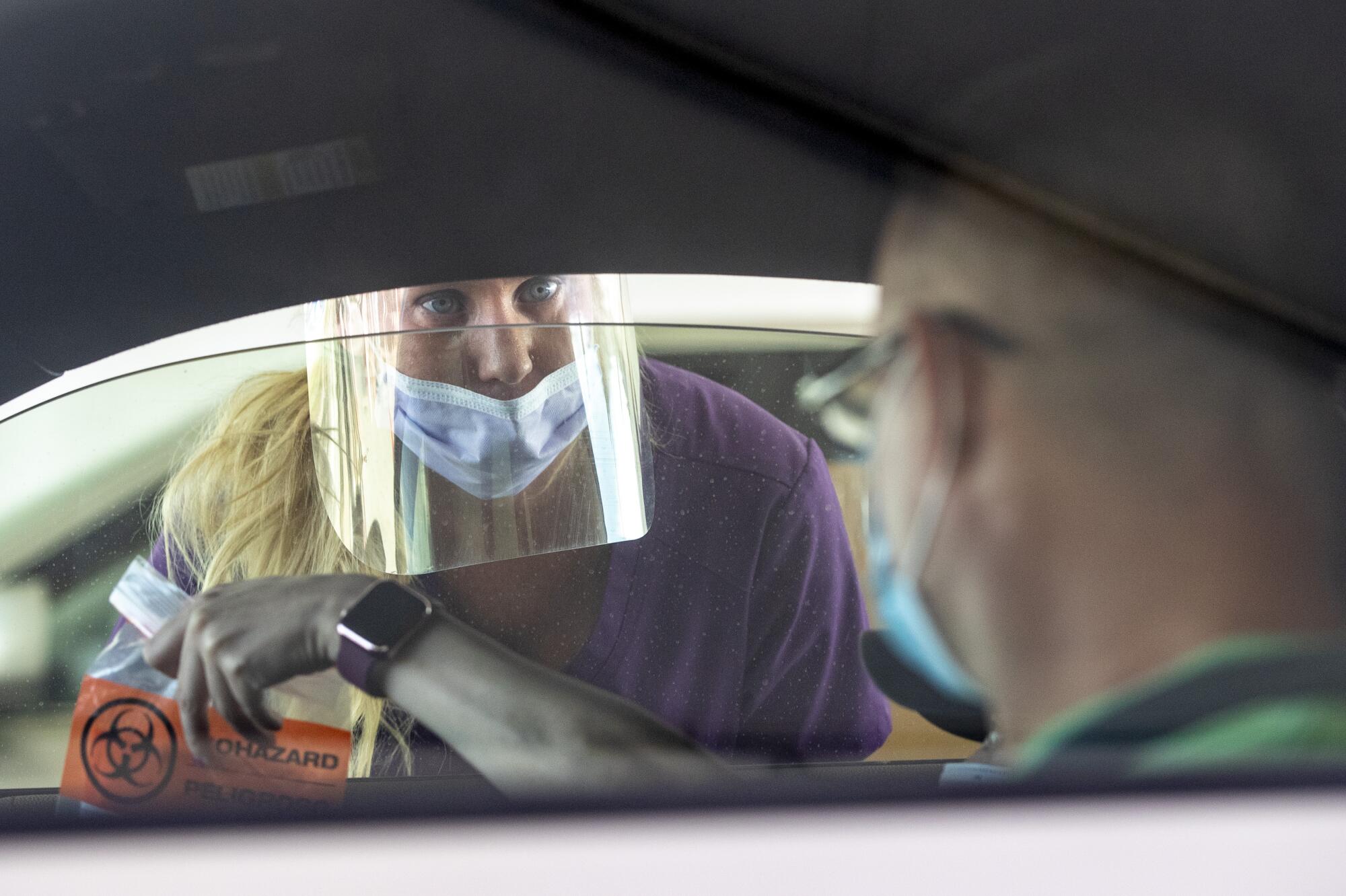
In April, the City Council in the oil town of Taft pushed to reopen businesses ahead of the state-mandated timeline. The town’s mayor penned a letter with four Kern County supervisors and state Senate Republican Leader Shannon Grove of Bakersfield, asking Newsom to empower county health officers to determine when they could reopen.
Kern County Sheriff Donny Youngblood told The Times that although he encourages masks and social distancing, his department is not enforcing state orders restricting businesses or gatherings or requiring facial coverings in public.
“We’re not going to be the mask police. We’re not going to be the church police. We’re simply not,” Youngblood said.
He figured the state probably wishes Kern County were not part of California because it is so conservative.
“We’ve always been kind of the odd man out in the state of California,” he said. “People have their own beliefs. The thing that makes our country great is we don’t all agree on everything. If we did, we would just be sheep.”

The rural, agricultural Central Valley has become one of the places hardest hit by coronavirus in the U.S, with the virus spreading rapidly among low-wage, primarily Latino essential workers, including those working in agriculture and food processing. In Kern County, COVID-19 cases have been reported at Primex Farms, a pistachio farm in Wasco and Bakersfield-based carrot giants Bolthouse Farms and Grimmway Farms.
On Sunday, Kern County had the second-highest per capita infection rate in California, behind Merced County, with 723 cases per 100,000 people over the last two weeks, according to The Times coronavirus tracker. By comparison, Los Angeles County had 297 cases per 100,000 people over that same period.
As of Sunday, Kern County had confirmed 26,570 cases and 204 deaths.
In recent weeks, Gov. Gavin Newsom has targeted the Central Valley for extra resources to battle the virus, including so-called “strike teams” and the allocation of some $52 million to improve testing, tracing and isolation protocols.
But navigating the state’s numerous agencies has been a quagmire, said Constantine, the public health director.
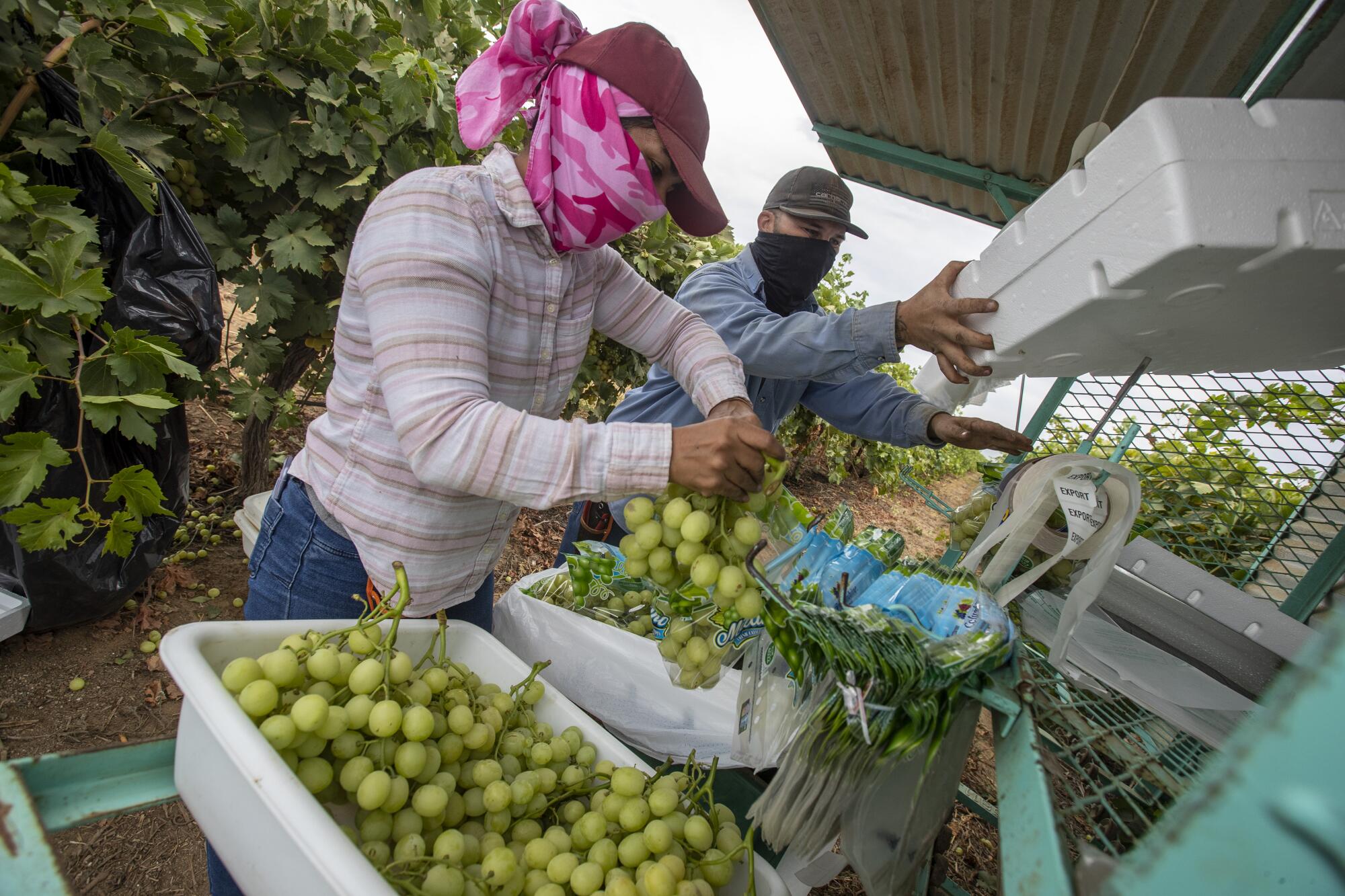
“We know there’s a lot going on with the state. We hope there’s a time coming soon where we can coordinate and help the community stay safe, but that hasn’t happened,” he said.
In early July, Constantine received an email from the California Labor and Workforce Development Agency saying a “multi-agency state enforcement strike team” would be visiting Kern County businesses to help improve compliance with health orders and to work with the county to “use enforcement to address employers who are refusing to comply with safe reopening guidelines.”
The email, which was shared with The Times, instructs county officials to contact the state’s Department of Industrial Relations to report specific businesses that needed to be investigated.
Constantine received a separate email from the California Governor’s Office of Emergency Services with contacts for multiple agencies as well as a “centralized email address” for counties on the state’s coronavirus watch list to request help dealing with specific sectors or businesses. Another email about on-site enforcement came from the state health department.
The Kern County health department has received hundreds of complaints about businesses violating health orders, Constantine said. Since April 6, the county has sent 539 first-warning letters to businesses and 120 second warnings. It has reported 37 businesses that refuse to comply to the state strike team since July, he said.
What happened to those complaints?
“We don’t know,” Constantine said. “That’s the coordination that we need.”
Ferguson, the spokesman for the Governor’s Office of Emergency Services, told The Times that questions about county-specific enforcement actions should be sent to strike team agencies directly. The state’s department of public health referred The Times back to Cal OES. The state’s Labor and Workforce Development Agency and its Department of Industrial Relations did not respond to queries about what happened to the Kern County complaints.
Asked about county leaders’ frustration over having to deal with multiple agencies, Ferguson said: “That sounds like a coordination issue rather than an L.A. Times story.”
Ferguson said enforcement of health orders is best done at the local level by health departments and law enforcement agencies. The state, he said, coordinates with local jurisdictions when there is a “gap or lack of resources” and in dealing with serial offenders.
Since early July, when the strike teams were formed, the state has made 991,696 contacts with businesses across California via in-person visits, phone calls and emails and undertaken 1,128 enforcement actions, he added.
Law enforcement officials in Kern County said they are encouraging voluntary compliance and education rather than enforcing state orders.
“There are definitely questions on who’s enforcing what. I think that’s across the board, regardless of what county you’re in,” said Sgt. Robert Pair, a spokesman for the Bakersfield Police Department.
Pair said he thought the state had “taken the lead in enforcement.” He knew of one case, early in the pandemic, in which the county health department asked Bakersfield police to deal with a gym that refused to close.
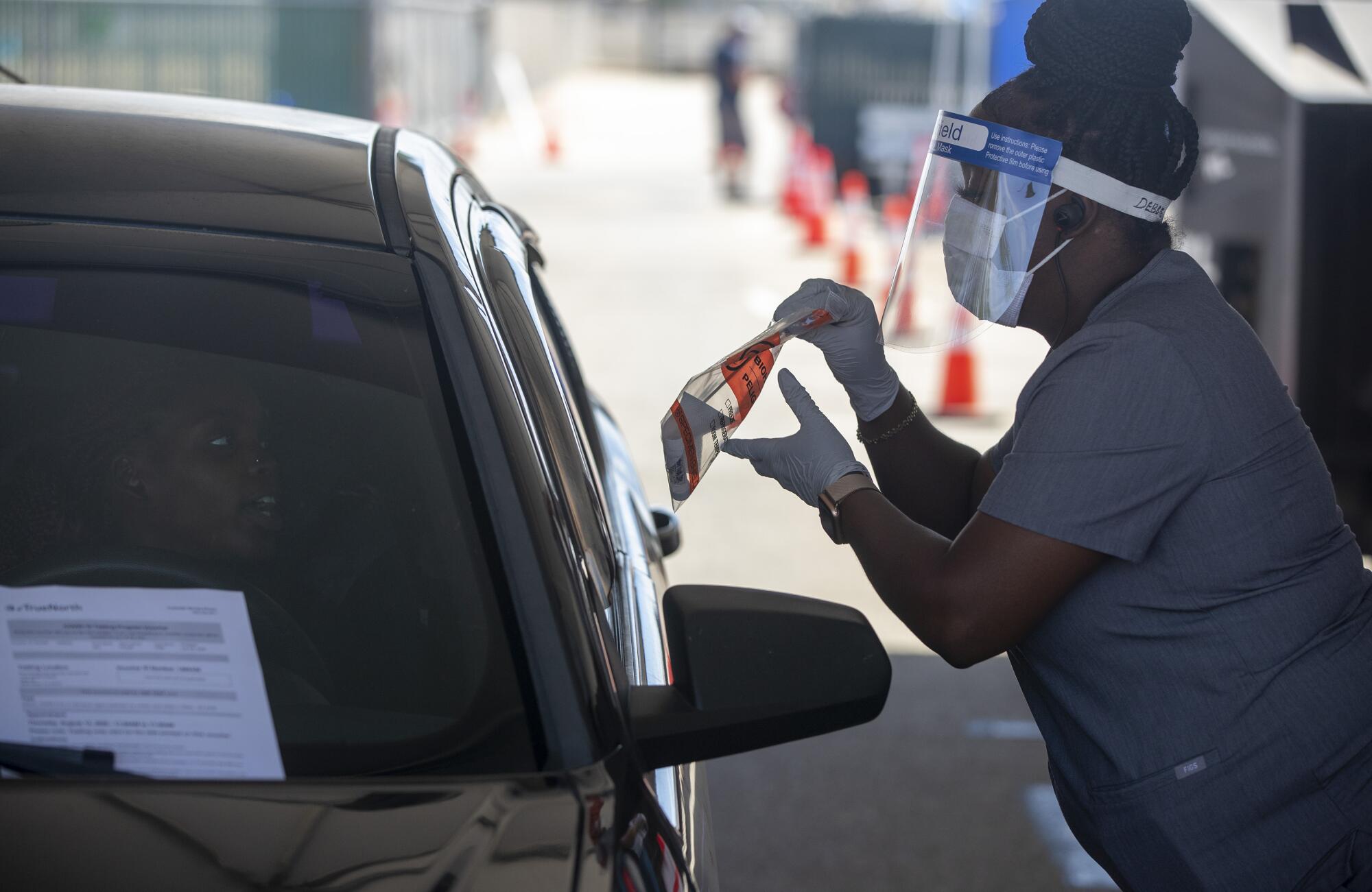
Sheriff Youngblood said it made no sense to him to crack down on businesses and unmasked people while the state is releasing thousands of inmates, including violent offenders, to curb the spread of COVID-19 in prisons.
In mid-May, Youngblood posted a video to his Facebook page in which he stood in uniform in front of his Texas longhorn bull, Buford, and said his deputies patrolling the streets did not seem to be getting infected.
“I believe that herd immunity may be the secret to this,” Youngblood said. The camera zoomed in on Buford. The sheriff added: “And that’s no bull.”
Critics of aggressive stay-at-home orders have called for herd immunity, the idea being that eventually a sufficient percentage of the population will have survived COVID-19 and become immune, in turn protecting the rest of the uninfected population by interrupting the spread of the virus. But herd immunity would lead to massively increased death tolls, health experts say.
Youngblood told The Times he stands by the video, and “I have my beliefs, but I’m just a tap-dancing monkey with a badge on and not an expert.”
In another video just before Memorial Day, the sheriff said that although businesses were starting to reopen, it “doesn’t mean the virus is gone.” People still needed to socially distance and wash their hands “because we don’t want to go backward.”
Jay Tamsi, president of the Kern County Hispanic Chamber of Commerce, said businesses are trying their best to keep up with city, county and state guidelines and rules, but “it’s a lot to take in.”
On top of the governor’s guidelines, restaurants have to apply for separate city and county permits to sell food outside, even while indoor dining is prohibited, Tamsi said. In recent days, he said, several businesses that belong to the Hispanic Chamber were warned or cited for not having proper permits — even though they enforced social distancing, mask-wearing and other safety requirements just to stay open.
He added that the state’s requirement that barbershops, nail salons and restaurants operate outdoors is brutal in the Central Valley, where temperatures hit 112 degrees this week.
Late last month, the Delano-based California Farmworker Foundation, working with the county and Good Samaritan Hospital, started providing mobile COVID-19 testing to farmworkers at their worksites in the fields.
“We’re that vulnerable population that needed attention.”
— Hernan Hernandez, director of the California Farmworker Foundation
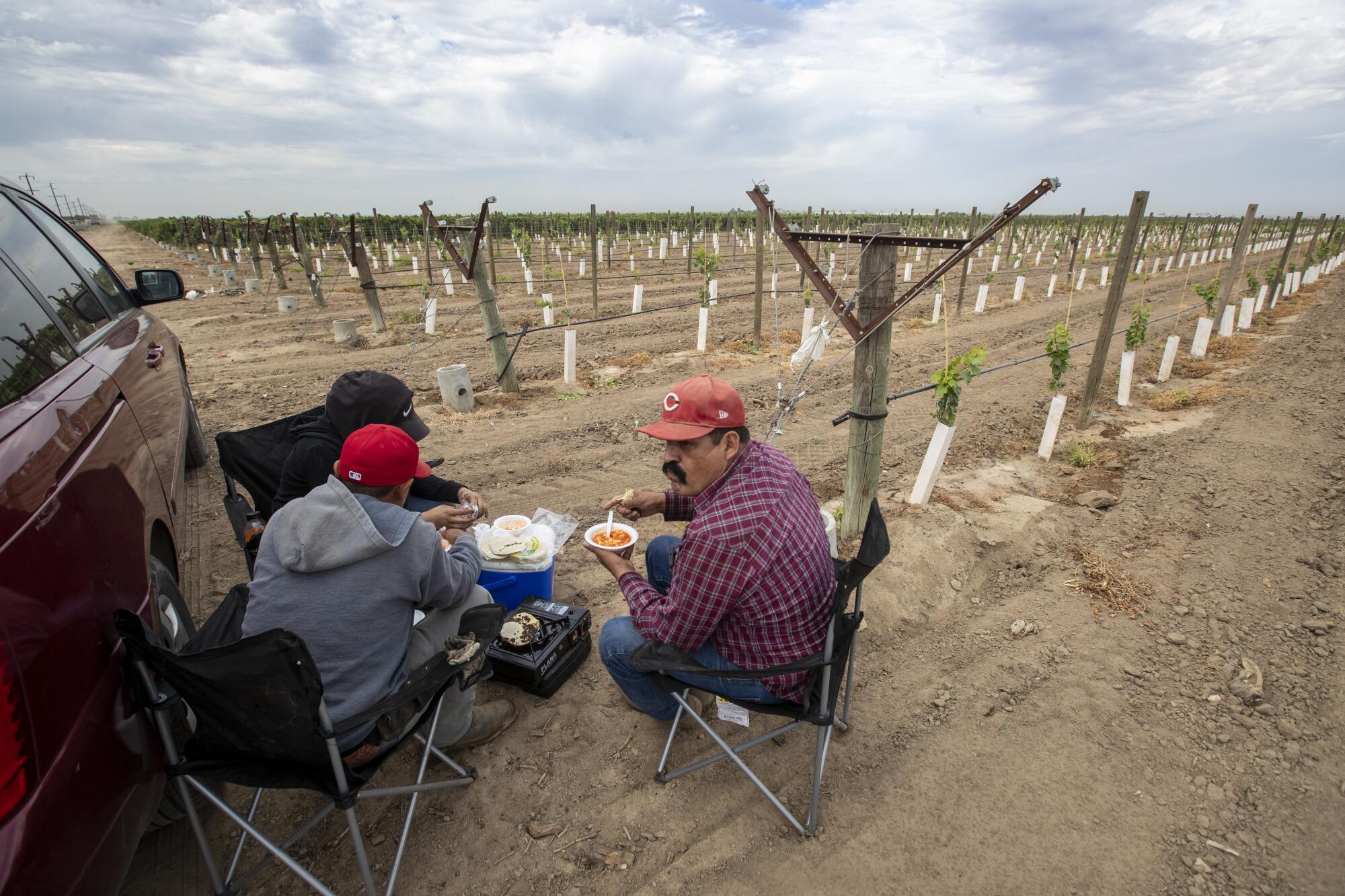
It’s being done, in part, to cut through the confusion of setting up a test, which includes navigating government websites in English and having reliable internet and an email address, said Hernan Hernandez, director of the California Farmworker Foundation. For people who lack legal immigration status, it can feel like too big a risk to give personal information to the state, he said.
Hernandez and county officials said community spread, especially in multifamily housing and at family gatherings, has been a major problem. After the economy largely reopened around Memorial Day, Hernandez started once again seeing quinceañeras, baptisms and family dinners in farmworker communities, even as people tried to be careful at work.
“The Latino culture, we operate as a collective,” Hernandez said. “We see a lot of community activity. We love to celebrate with bands, and it got to the point where people were putting bands in living rooms, trying to be subtle. But you look outside and see a lot of cars.”
Hernandez said that while “we’re finally seeing that coordination” with local and state officials and community organizations, the state should have focused on the Central Valley much sooner because of its demographics and poverty levels.
“They could have seen this coming,” Hernandez said. “We knew this valley was going to be a hot spot. We need a lot of resources. We need a lot of education. We’re that vulnerable population that needed attention.”
Times staff writers Sean Greene, Rong-Gong Lin II and Iris Lee contributed to this report.
More to Read
Sign up for Essential California
The most important California stories and recommendations in your inbox every morning.
You may occasionally receive promotional content from the Los Angeles Times.

